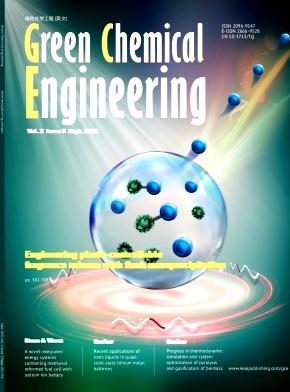Machine learning models coupled with ionic fragment σ-profiles to predict ammonia solubility in ionic liquids
IF 9.1
Q1 ENGINEERING, CHEMICAL
引用次数: 0
Abstract
Emitting NH3 into the atmosphere leads to significant air pollution, while NH3 itself serves as an essential component for fertilizers and refrigerants in industry. Thus, recovering and reusing NH3 is highly valuable. Ionic liquids (ILs) have shown great potential for NH3 capture, where the accurate prediction of solubility is a critical point for selecting ILs and designing a separation process. This work combined the Ionic Fragment Contribution (IFC) strategy with machine learning (ML) to develop four models (IFC-ML) to predict NH3 solubility in ILs. A dataset containing 785 solubility data points, covering 10 cations and 10 anions, was collected. From this dataset, the S1–S6 descriptors based on the IFC method were used as inputs for the ML models, together with temperature (T) and pressure (P). Among the models, the IFC-GBR model was recommended for predicting NH3 solubility in ILs due to its higher coefficient of determination (R2) of 0.9945 and lower mean squared error (MSE) of 0.0003 than the others. Additionally, in comparison with previous conductor-like screening model for real solvents (COSMO-RS) and extreme learning machine (ELM) methods, the IFC-GBR (gradient boosting regressor) method showed a more accurate prediction of the NH3 solubility in ILs over a wider range of temperatures and pressures, providing additional chemical insights into IL-NH3 system that cations played a more important role for NH3 solubility. These results highlighted the developed IFC-GBR model offered valuable insights for helping guide the process design of absorbing NH3 through IL-based technology.

结合离子碎片σ-谱的机器学习模型预测氨在离子液体中的溶解度
向大气中排放NH3会导致严重的空气污染,而NH3本身是工业中肥料和制冷剂的重要成分。因此,NH3的回收和再利用是非常有价值的。离子液体具有捕获NH3的巨大潜力,其溶解度的准确预测是选择离子液体和设计分离工艺的关键。这项工作将离子片段贡献(IFC)策略与机器学习(ML)相结合,开发了四个模型(IFC-ML)来预测NH3在il中的溶解度。收集了一个包含785个溶解度数据点的数据集,涵盖10个阳离子和10个阴离子。基于IFC方法的S1-S6描述符与温度(T)和压力(P)一起作为ML模型的输入。在这些模型中,IFC- gbr模型具有较高的决定系数(R2)(0.9945)和较低的均方误差(MSE)(0.0003),因此被推荐用于预测NH3在il中的溶解度。此外,与之前的真实溶剂类导体筛选模型(cosmos - rs)和极限学习机(ELM)方法相比,IFC-GBR(梯度增强回归器)方法在更大的温度和压力范围内更准确地预测了NH3在IL-NH3体系中的溶解度,为IL-NH3体系提供了更多的化学见解,即阳离子对NH3溶解度起着更重要的作用。这些结果表明,开发的IFC-GBR模型为帮助指导利用IL-based技术吸收NH3的工艺设计提供了有价值的见解。
本文章由计算机程序翻译,如有差异,请以英文原文为准。
求助全文
约1分钟内获得全文
求助全文
来源期刊

Green Chemical Engineering
Process Chemistry and Technology, Catalysis, Filtration and Separation
CiteScore
11.60
自引率
0.00%
发文量
58
审稿时长
51 days
 求助内容:
求助内容: 应助结果提醒方式:
应助结果提醒方式:


